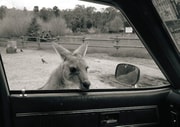Retiring could be more expensive than you think–here’s how it outpaces mortgage costs
By
Seia Ibanez
- Replies 18
Retirement is often seen as the golden years, a time to relax and enjoy the fruits of a lifetime of hard work.
However, for many, the dream of a comfortable retirement may be more costly than anticipated, with recent figures indicating that the annual expenses for retirees now exceed the cost of servicing an average mortgage.
The Association of Superannuation Funds of Australia (ASFA) has released eye-opening data that suggests a single retiree requires $51,278 per year to maintain a comfortable lifestyle, assuming their home is fully paid off. This figure jumps to a staggering $72,148 for couples.
To put this into perspective, the annual cost of repaying an average new Australian mortgage of $615,178 is $45,408, based on monthly repayments of $3,784.
These numbers are particularly concerning when considering the Reserve Bank's series of 13 interest rate hikes over 18 months, bringing the cash rate to a 12-year high of 4.35 per cent.
While these increases primarily impact younger people with mortgages, the ripple effect of high inflation also squeezes the budgets of older residents who wish to enjoy their retirement years to the fullest.
According to a study by the Swedish loan broking group Sambla, Australia is seventh place in the world’s most expensive countries to retire in–behind only Switzerland, Monaco, Qatar, Singapore, Liechtenstein, and Canada.
The cost of retirement in Australia is divided into several categories, with leisure activities being the most significant expense at $11,509 annually.
This is followed by transport ($9,309), food ($7,372), and health costs ($5,873).
The total weekly expenses for a single retiree amount to $982.34, or $51,278 per year.
The recent Aged Care Taskforce's final report has added to the conversation by suggesting that wealthier retirees should contribute more to their aged care costs.
'It is appropriate for older people to make a fair co-contribution to the cost of their aged care based on their means,' it said.
ASFA Chief Executive Mary Delahunty stated that high inflation pressured retirees.
'Retiree budgets have been under substantial pressure for the past two years due to the high cost of essential goods and services,' she said.
Insurance costs, which surged by 16.3 per cent last year, along with rising electricity bills and food prices, are major drains on retiree finances.
Despite these challenges, Delahunty has indicated that the worst of the cost of living crisis may have passed.
‘Fortunately, we are seeing price increases in the key categories that make up retiree budgets – home and content insurance, fruit and vegetables, fuel and electricity–begin to ease,’ she said.
ASFA recommended that a single retiree have $595,000 saved to live comfortably and access the age pension at 67, while couples should aim for $690,000.
These figures are based on the ability to afford annual holidays in Australia, occasional overseas trips, and a new car every few years.
The reality of higher life expectancy in Australia, which averages 81 years for men and 85 for women, means that Australians may face a longer and more expensive retirement than those in other developed nations.
Super Consumers Australia, however, suggested that $258,000 is sufficient for a modest retirement, with holidays limited to domestic travel.
For those with more modest means, ASFA suggested that $100,000 can fund a basic retirement for singles or couples, supplemented by the age pension, with access to a basic age pension of $1,002.50 a fortnight.

How are you preparing for the cost of retirement? Have you found any strategies that help manage these expenses? Let us know in the comments below.
However, for many, the dream of a comfortable retirement may be more costly than anticipated, with recent figures indicating that the annual expenses for retirees now exceed the cost of servicing an average mortgage.
The Association of Superannuation Funds of Australia (ASFA) has released eye-opening data that suggests a single retiree requires $51,278 per year to maintain a comfortable lifestyle, assuming their home is fully paid off. This figure jumps to a staggering $72,148 for couples.
To put this into perspective, the annual cost of repaying an average new Australian mortgage of $615,178 is $45,408, based on monthly repayments of $3,784.
These numbers are particularly concerning when considering the Reserve Bank's series of 13 interest rate hikes over 18 months, bringing the cash rate to a 12-year high of 4.35 per cent.
While these increases primarily impact younger people with mortgages, the ripple effect of high inflation also squeezes the budgets of older residents who wish to enjoy their retirement years to the fullest.
According to a study by the Swedish loan broking group Sambla, Australia is seventh place in the world’s most expensive countries to retire in–behind only Switzerland, Monaco, Qatar, Singapore, Liechtenstein, and Canada.
The cost of retirement in Australia is divided into several categories, with leisure activities being the most significant expense at $11,509 annually.
This is followed by transport ($9,309), food ($7,372), and health costs ($5,873).
The total weekly expenses for a single retiree amount to $982.34, or $51,278 per year.
The recent Aged Care Taskforce's final report has added to the conversation by suggesting that wealthier retirees should contribute more to their aged care costs.
'It is appropriate for older people to make a fair co-contribution to the cost of their aged care based on their means,' it said.
ASFA Chief Executive Mary Delahunty stated that high inflation pressured retirees.
'Retiree budgets have been under substantial pressure for the past two years due to the high cost of essential goods and services,' she said.
Insurance costs, which surged by 16.3 per cent last year, along with rising electricity bills and food prices, are major drains on retiree finances.
Despite these challenges, Delahunty has indicated that the worst of the cost of living crisis may have passed.
‘Fortunately, we are seeing price increases in the key categories that make up retiree budgets – home and content insurance, fruit and vegetables, fuel and electricity–begin to ease,’ she said.
ASFA recommended that a single retiree have $595,000 saved to live comfortably and access the age pension at 67, while couples should aim for $690,000.
These figures are based on the ability to afford annual holidays in Australia, occasional overseas trips, and a new car every few years.
The reality of higher life expectancy in Australia, which averages 81 years for men and 85 for women, means that Australians may face a longer and more expensive retirement than those in other developed nations.
Super Consumers Australia, however, suggested that $258,000 is sufficient for a modest retirement, with holidays limited to domestic travel.
For those with more modest means, ASFA suggested that $100,000 can fund a basic retirement for singles or couples, supplemented by the age pension, with access to a basic age pension of $1,002.50 a fortnight.
Key Takeaways
- Retiring in Australia now costs more annually than the average mortgage repayment for a single individual, which is $51,278 as compared to a typical mortgage cost of $45,408 per year.
- The associated living costs for a comfortable retirement are $72,148 annually for couples, as detailed by the Association of Superannuation Funds of Australia (ASFA).
- Rising prices due to inflation, particularly for essentials such as food, energy, and housing, put considerable pressure on retirees’ finances.
- Recommendations for a comfortable retirement suggest singles need around $595,000 in superannuation, with the annual cost of living increases starting to ease, according to ASFA's Chief Executive.
Last edited by a moderator:








